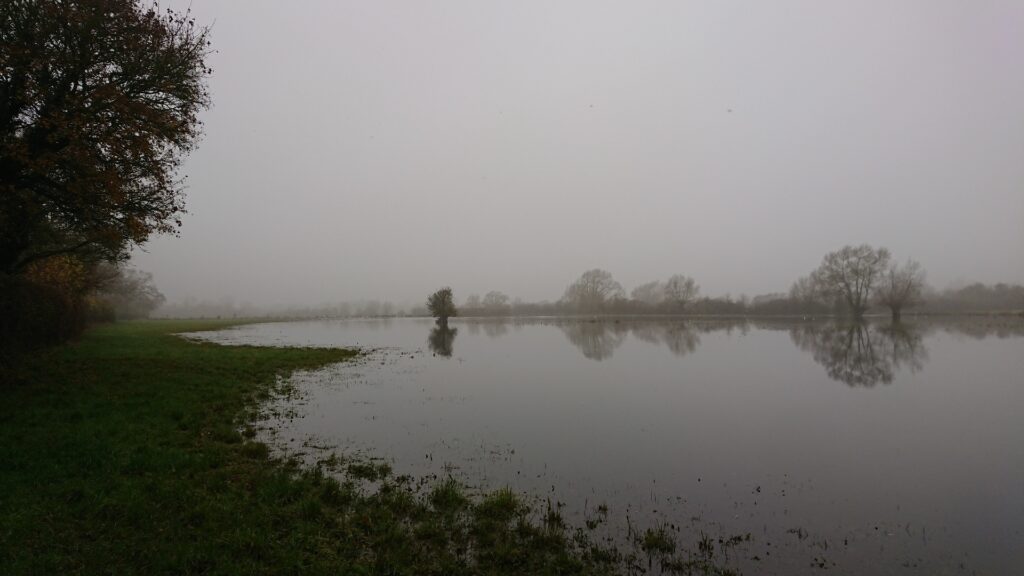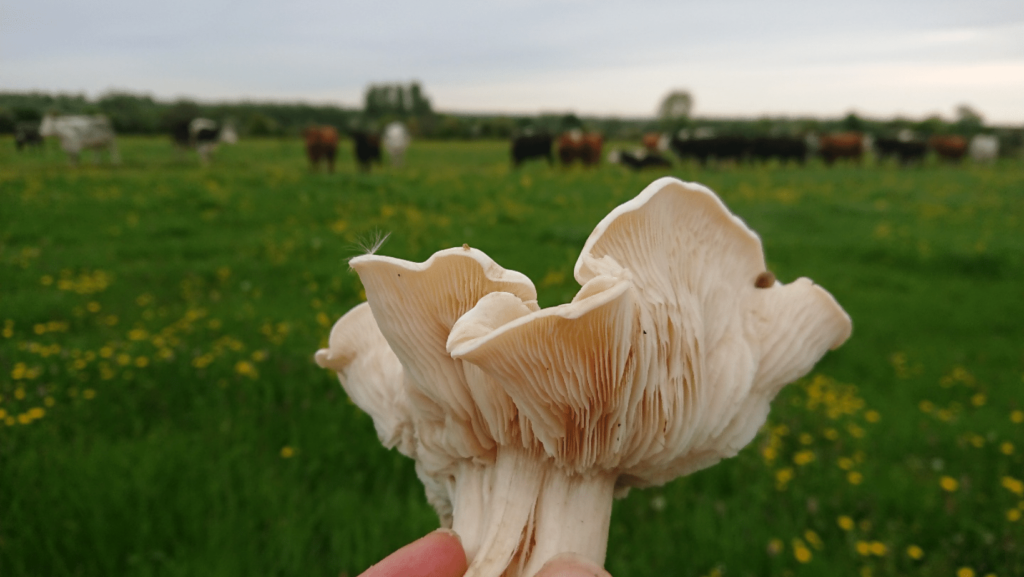Pasture Champions: Andy Rumming Waterhay Farm
- Andy Rumming
Tell us about your farm, its location, size, altitude, climate, soils, enterprises, organic/PfL/other status
Waterhay Farm is located in Leigh near Cricklade in North Wiltshire. Its 70 hectares, but we have licences to make hay on a further 30 hectares of local species rich flood plain meadows, which are now an integral part of our over winter forage and bedding supply. The farm straddles the river Thames with a third of the farm flooding every winter. These floods can be brief, but more recently have been prolonged with some land underwater for several months, and peak depths edging higher.
Occasionally summer floods do also happen. The farm is pretty flat at around 80-85m above sea level. The soil is mainly a neural heavy clay, overlaying gravels in the flood plain. A small area is more alkali, and the changes in flora show where this is. The whole farm is permanent pasture and supports 90 suckler cows in 2 herds. The calves upon weaning are moved to my brothers farm 8 miles away for finishing. Both farms are part of the same business, DW Rumming & Sons, and we are PFLA accredited with our own PFLA accredited on farm butchery and retail beef business. We have one field in Higher Level Stewardship, and Entry Level Stewardship across the farm, but the monetary income from this is small.
 Winter flood
Winter flood
Give us a general description of the biodiversity on your farm – essentially above ground (but reference to below ground if relevant) – both flora and fauna
Waterhay Farm is a place of grass (often long), lots of mature hedges and a lot of in hedgerow trees. Elm suckers are our commonest tree, closely followed by Ash. Along the river and on the flood plain we have lots of crack willow, including 20 plus gnarled “veteran” willows which we pollard on rotation for our biomass boiler (which heats our houses).
The willows are fascinating and are home to nesting tree creepers, and even other trees within their crowns. The riverbanks are all now fenced, so we have a wild riparian strip both sides of the river which includes reeds, sallow, and watermint which provides habitat for Reed and Cettis Warblers, egrets and waders, plus teal in the winter. This dense cover is also used by otters and stoats and water voles.
The land on the flood plain is made up of fields which are rotationally grazed and one large traditional hay meadow. There is some overlap of species but the traditional hay meadow is a good example of MG4 grassland containing a wide range of species including Snakehead Fritillaries, Peppered Saxifrage, Great Burnett and yellow rattle. We cut this for hay and it’s an important part of the winter diet.
The winter floods can be extensive and provide a large wetland area for over wintering wader and ducks. This influx has helped the farm record over 100 species of bird in 4 years. The non flood plain area is split between areas cut for silage and areas grazed. All of these fields have been improved in the past, but they are becoming more diverse thanks to rotational grazing, no inputs and species rich hay fed in the field. The dominant grass here is meadow foxtail which is supposedly “unproductive” but it works for us.
 St George's Mushroom
St George's Mushroom
Our fungal diversity on what is productive farm is something I am very excited about, particularly the finds on the silage fields. We have a wide range of grassland species including the spring fruiting (and very tasty) St George's mushroom and tricky to find Meadow Puffball. Being close to the river we have a very large population of damselflies, and in May they can be seen in the thousands and spread out into the fields.




